November 2017 Archives
Nov 7, 2017
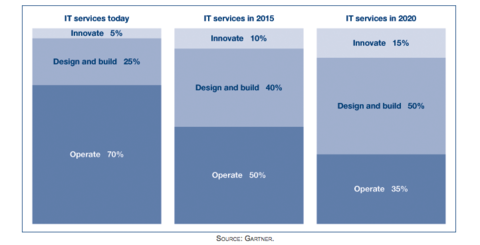
While continuing to deliver reliable IT services, CIOs have an opportunity to use new technologies and practices to redirect or liberate resources that increase innovation and value for the enterprise. The focus of IT skills is changing -- from service delivery to designing and implementing technology-enabled, information-rich and transformed business processes.
Because the highly skilled talent required to transform IT is always in scarce supply, IT's traditional approach to finding new talent, with its heavy reliance on external sourcing, will ultimately impede a CIO in positioning IT to create competitive advantage for the enterprise. Doing nothing is not an option, since this will lead IT to the lesser role of commodity service provider.
CIOs have an opportunity to re-imagine IT by looking at current resources and developing a skills plan that addresses ongoing digitization of the enterprise, the rise of lighter-weight technologies and social computing, and the need for technology-driven innovation. As shown in the figure opposite, the typical IT organization devotes about 70% of its resources to operating IT -- managing infrastructure and supporting applications. That leaves 30% of resources for upgrading and expanding infrastructure to meet business requirements and for building new or enhanced applications that further automate business processes and improve information. Innovative solutions that allow IT to create new business services make up only a small part of that 30%.
Over time, the percentage of resources devoted to operating IT will decline significantly because of automation and new cloud-enabled delivery models. For example, based on the Gartner 2011 CIO Agenda Survey, 42% of CIOs expect to deliver more than half of their transactions via the cloud by 2015, a figure that will rise to 73% by 2020. This will substantially reduce the internal skills and resources required to run IT, though IT will need reskilling to support the new service delivery models.
[...]
CIOs must cultivate new IT skills
To ensure that IT increasingly contributes to enterprise growth and innovation, CIOs must incorporate a new talent strategy into their IT strategic plan that blends business and IT skills. They will need a workforce-planning process to identify the range of skills involved in operating IT services, building new services and leading business-IT innovation. CIOs should use the following approaches to cultivate the new IT skills:
- Buy from the market in the short term.
- Contribute to the market in the intermediate term by building internal capabilities through continuing education and reskilling.
- Influence the market in the long term by working with educators/academic communities and suppliers.
CIOs need to bear in mind that they, too, must become innovation leaders to foster business support for technology-enabled business innovation.
Source: Gartner (View full report)
Dan Corcoran | Permalink | Comments (0)
Nov 7, 2017
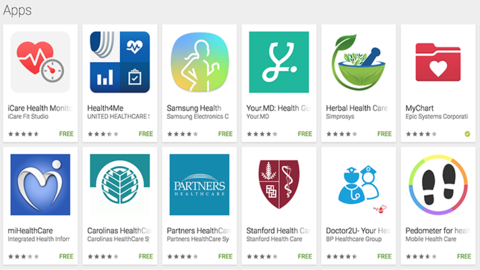
Existing digital health products hold the potential to save the nation $46 billion in healthcare spending if they're deployed comprehensively, according to a new report from IQVIA, which on Tuesday renamed itself from Quintiles/IMS Health.
"For the first time we've sought to create a model that looks across five different patient population groups where there's been a proven reduction in acute care utilization, typically hospitalization, when consumer mobile apps are used," Murray Aitken, executive director of the IQVIA Institute for Human Data Science, said in a conference call about the new report. "Diabetes prevention, diabetes care, asthma, cardiac rehabilitation, and pulmonary rehabilitation -- in each of those five areas we took the results from published research and modeled that to estimate that if these available apps today were used by all patients who could benefit from them, the US healthcare system could save $7 billion per year. So that's just for five areas. If that level of savings was achievable across all disease areas, we're looking at annual savings of something like $46 billion."
[...]
In addition to the apps themselves, the report looks at the growing amount of efficacy data available about these apps, based on searches on ClinicalTrials.gov. As of February, there were 869 active trials using digital health technology worldwide and 540 in the US.
IQVIA also notes that a lot of the barriers to adoption that they observed in 2013 and 2015 are starting to come down little by little, as more privacy and security guidelines have been published, app formularies are being established, and the shift to value-based care is continuing.
"We still have a long way to go," Aitken said. "We don't want to overstate the extent to which mobile health apps have become mainstream, but relative to four years ago there's a lot of progress that has been made."
Source: Healthcare IT News (View full article)
Dan Corcoran | Permalink | Comments (0)
Nov 7, 2017
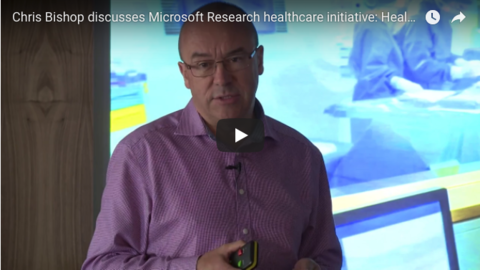
Earlier this year, Microsoft launched Healthcare NExT, a new initiative that aims to bring together artificial intelligence, health research, and the expertise of its industry partners in order to provide people with the means to live healthier lives and cure deadly disease. In a blog post detailing the initiative, Microsoft noted how few other industries have the problems as complex as that of health care, though the company believes it can make headway by incorporating new innovative technology.
"It's a big challenge," said Peter Lee, Corporate Vice President at Microsoft Research NExT. "But we believe technology - specifically the cloud, AI and collaboration and business optimization tools - will be central to health care transformation."
[...]
Discovering a cure for cancer is an ambitious goal to take on, and it remains to be seen how cancer research will be improved with Microsoft's involvement. That said, Microsoft has expressed a desire to "empower every person and organization to achieve more." If it can maintain that drive and focus, who knows what the company will develop.
"We are incredibly energized about the opportunities to make a difference in health care," said Microsoft. "We've been listening carefully to our customers and partners within the health care sector, and we've heard their message: Let's work together, innovate together and create solutions that can empower people to lead healthier lives."
Source: Futurism (View full article)
Dan Corcoran | Permalink | Comments (0)
Nov 7, 2017
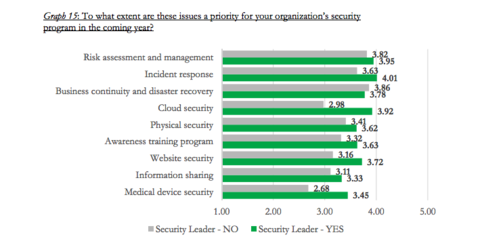
The 2017 HIMSS Cybersecurity Survey provides insight into what healthcare organizations are doing to protect their information and assets, in light of increasing cyber-attacks and compromises affecting the healthcare sector.
THE FINDINGS IN THIS REPORT OFFER A "DIRECTIONALLY CORRECT" INSIGHT INTO THE CYBERSECURITY PERSPECTIVES AND PRACTICES OF INFORMATION SECURITY PROFESSIONALS IN U.S. HEALTHCARE ORGANIZATIONS
Based on the feedback from 126 U.S. health information security professionals, an analysis of the findings yielded a few notable themes, which are explored in greater detail in this report:
- Healthcare organizations with information security professionals on staff are taking steps to enhance their cybersecurity programs.
- Healthcare organizations with a chief information security officer or other senior information security leader have adopted holistic cybersecurity practices and perspectives in critical areas.
- Information security professionals at acute care providers have more specific concerns about cybersecurity, compared to their non-acute care provider counterparts.
Source: HIMSS (View full PDF report)
Dan Corcoran | Permalink | Comments (0)
Nov 6, 2017
Earlier this year the US Food and Drug Administration (FDA) heralded the forthcoming launch of its pre-certification pilot program for new digital health software which it hopes will help revolutionise the regulation of digital healthcare solutions in the US and allow innovations to safely reach the global market in a timely way, to the benefit of end users.
"We need to modernise our regulatory framework so that it matches the kind of innovation we're being asked to evaluate, and helps foster beneficial technology while ensuring that consumers have access to high-quality, safe and effective digital health devices," said FDA Commissioner Scott Gottlieb, M.D.
Warming to this user-centric theme, in a July FDA blog post, Gottlieb wrote: "This new program embraces the principle that digital health technologies can have significant benefits to patients' lives and to our healthcare system by facilitating prevention, treatment and diagnosis; and by helping consumers manage chronic conditions outside of traditional healthcare settings."
[...]
Creators of SaMD (Software as a Medical Device) products like the Canada-based Macadamian - a user experience design and software development company focused on the development of healthcare solutions - is excited about the potential less regulatory oversight will bring for smaller and more nimble companies, like theirs, to compete in the same space as larger corporations.
"With the advent of more complex solutions, like our My Diabetes Coach which leverages machine learning and artificial intelligence, the software and the medical device are merging," says Macadamian's Internet of Things (IoT) Director Timon LeDain. "The FDA has implemented the pre-certification pilot program to balance risk management with the agile development process. Software has shown itself to be capable of looking at a medical image and providing a diagnosis that matches or exceeds what experts could achieve."
Macadamian has also worked with the likes of Transcendent Technologies on projects such as the forthcoming Lifepod - an Amazon Alexa-powered virtual caregiver and digital health assistant - and specialise in creating connected healthcare solutions. LeDain observes innovations can take years to reach the market, affecting manufacture, marketing and sale, with the increased cost ultimately transferred to the consumer. He thus applauds the opportunity to improve patient outcomes with the reduced regulatory burdens of the FDA program while driving down the costs of delivering healthcare.
"The pros outweigh the cons and demonstrate the FDA is aware of its impact on healthcare innovation and is looking at 'out of the box' approaches to address this," he says. "Some might argue the pendulum could swing too far towards the deregulated space with potential adverse health events as a result, but I don't see this outweighing the benefits. There's already proof unregulated products like the Apple Watch and Owlet Care's baby monitor have saved countless lives by providing consumers with information they previously never had access to."
Source: Healthcare Global (View full article)
Dan Corcoran | Permalink | Comments (0)
Nov 6, 2017
=
Hospitals and health systems are constantly looking for ways to boost revenue, and a few sound strategies have emerged including streamlining EHR data and simply increasing the number of patients a physician sees in a given day. To bring it all together, however, often requires a bit more technology.
David Conejo, CEO of Rehobath McKinley Christian Healthcare Services in Gallup, New Mexico, found what he was looking for when he stumbled upon Zoeticx, a developer of medical software that bridges the gap between medical quality and patient care.
[...]
Patient monitoring at the hospital has improved. That's good news for a facility that now has to think of patients as consumers and all of the market considerations that entails. But it's also a nice arrow to have in the quiver considering the industry-wide dip in inpatient activity that has taken place.
"We're seeing a lot more outpatients, and that offsets the decline in inpatient business," said Cohejo. "So we've been doing more preventative work than diagnostic and treatment work."
Business is growing, with full or near-full compliance. And with its ACO in startup mode, RMCHS is getting a bonus check for $80,000 from Medicare for containing costs, in addition to the new revenues that have been generated.
"A dollar investment in preventative care saves $6 in acute care, so the more you anticipate, the better the whole cost structure," said Conejo.
The fact that more patients can be seen is an added bonus. When the doctor comes in, they already have the requisite information about meds, compliance and other important factors. That doesn't sound like much, said Conejo, but if a physician saves 10 minutes per patient, at 18 patients a day that;'s an extra 180 minutes. More minutes, more patients.
"Our residents will greatly benefit from this," he said.
Source: Healthcare IT News (View full article)
Dan Corcoran | Permalink | Comments (0)
Nov 6, 2017
Image Source: Telecoms Tech News
Cisco has announced that it will acquire cloud calling and contact centre solutions provider BroadSoft for $1.9 billion (£1.43bn) net of cash.
The acquisition of BroadSoft will not only augment Cisco's commitment to unified communications but also intensify its capacity to address the large number of old TDM (time division multiplexing) lines poised to transition to IP technology and cloud native solutions in the future.
[...]
The board of directors of both the companies have approved the acquisition, which is anticipated to come to an end during Q1 2018, subject to customary closing conditions and regulatory review. After the transaction is complete, BroadSoft employees will join Cisco's unified communications technology group, but until then both companies will operate as separate entities.
Source: Telecoms (View full article)
Dan Corcoran | Permalink | Comments (0)
Nov 6, 2017
[...] New cognitive technologies have the potential to substantially improve CAD for radiology images and also those from pathology labs, and to combine them with other diagnostic data. These technologies are advancing quickly in research labs, but have yet to make their way into medical practice. A relatively new center at Partners Healthcare - the Center for Clinical Data Science (CCDS) - is focused on bringing these technologies to the clinical world. Based at the highly-ranked institutions Massachusetts General Hospital (MGH) and Brigham & Women's Hospital (BWH) in Boston, the CCDS is a joint effort of MGH and BWH. Its goal is to employ machine learning and other artificial intelligence technologies to improve the healthcare delivery system; in particular, a key CCDS objective is to improve the effectiveness of imaging-based diagnosis.
The CCDS is pursuing a variety of machine learning approaches, but the primary technology that it is employing is deep neural networks (also known as deep learning). These technologies have already led to breakthroughs in other areas of image recognition, and many researchers expect that they eventually will do so with medical images. A recent article in the New England Journal of Medicine, "Translating Artificial intelligence into Clinical Care," expressed hope that this type of machine learning will lead to a breakthrough in care. As Dr. Keith Dreyer, Partners' Chief Data Science Officer, puts it:
We've had CAD for a couple of decades, but deep learning is a much better technology. It will provide much higher sensitivity and specificity than we have today, and radiologists will trust it. Integrating it with clinical practice offers many potential benefits.
The diagnosis of a lumbar spine injury, for example, might involve up to 300 MRI images and various other test results in an electronic medical record system. A deep learning application could quickly identify the most important images for a radiologist to review and recommend treatment alternatives. The technology could save substantial time for critically injured trauma patients and could leverage the radiologist's time for all patients.
Source: Forbes (View full article)
Dan Corcoran | Permalink | Comments (0)
Nov 6, 2017
It's no secret that America has a complicated relationship with healthcare. And with all the uncertainty of 2017 looming large over 2018, it can feel like a subject you just want to avoid reading about altogether. But one startup is out to change all that.
SimplyVital Health is using blockchain technology to give the healthcare industry a facelift. The company has developed two products, both of which address different aspects and targets within the industry: ConnectingCare and Health Nexus.
ConnectingCare
The first, ConnectingCare, is designed for healthcare providers, such as hospitals. It helps these customers streamline data to save time and money.
"ConnectingCare is our current revenue-generating, blockchain-backed platform," SimplyVital Health CTO Lucas Hendren said in an interview with the author. "It uses care coordination and financial forecasting to help providers in bundled payments get insight into what happens to patients when they leave the hospital. It is a strategic early use case for blockchain in healthcare because it uses blockchain as an immutable audit trail."
[...]
Health Nexus
Now, the company is launching its other product, Health Nexus, a blockchain protocol SimplyVital Health is building to dramatically broaden its scope--and revolutionize what we even mean by medical records (and how they can be used).
"Health Nexus [handles] data liquidity, payments, and storage, and is specifically designed for healthcare," Hendren said. "[It] will have an entirely new protocol for governance and data security that will allow for enterprise and the public to interface with sensitive data for the first time."
[...]
Source: Forbes (View full article)
Dan Corcoran | Permalink | Comments (0)
Nov 6, 2017
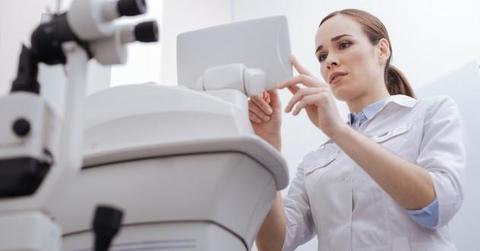
The U.S. Food and Drug Administration (FDA) cautioned the health care industry to be wary about networked medical devices containing off-the-shelf (OTS) software that can connect to networks. Both health care IT professionals and manufacturers are responsible for securing medical devices by performing regular software updates and applying security patches.
Stolen medical records are 10 times more valuable to fraudsters than credit card credentials. Even though medical devices don't house full patient records, they can be targets if they are connected to networks. Networked medical devices are part of the Internet of Things (IoT) and extend the endpoints by which intruders can gain access to computing systems that contain patient data ranging from medical records to financial information.
Cyberbreaches have devolved from straightforward data thefts to acts of mischief that can cause disruption. Health care organizations should review any medical devices that connect to networks to protect their infrastructure and patients from malicious acts.
Source: IBM Security Intelligence (View full article)
Dan Corcoran | Permalink | Comments (0)






